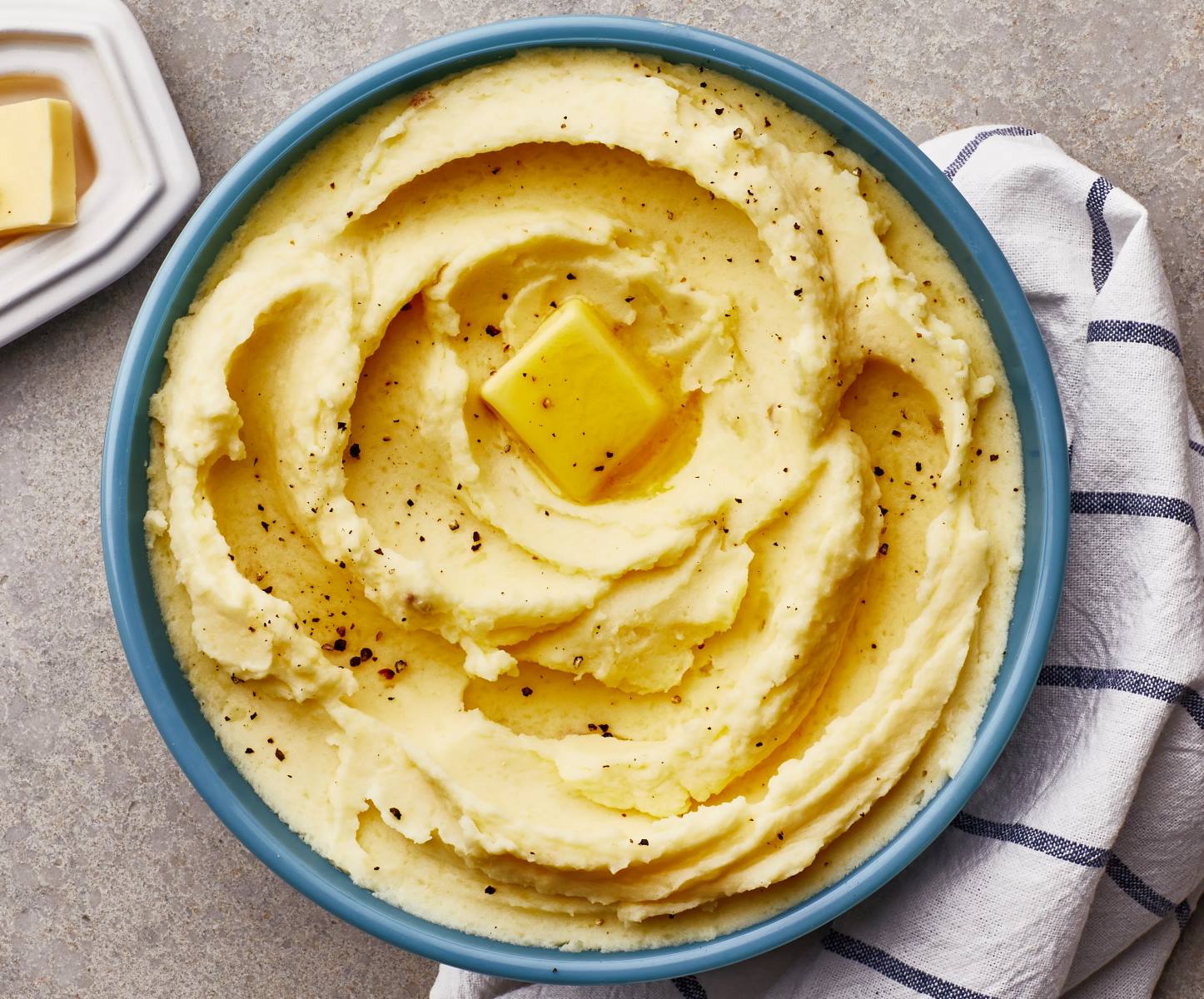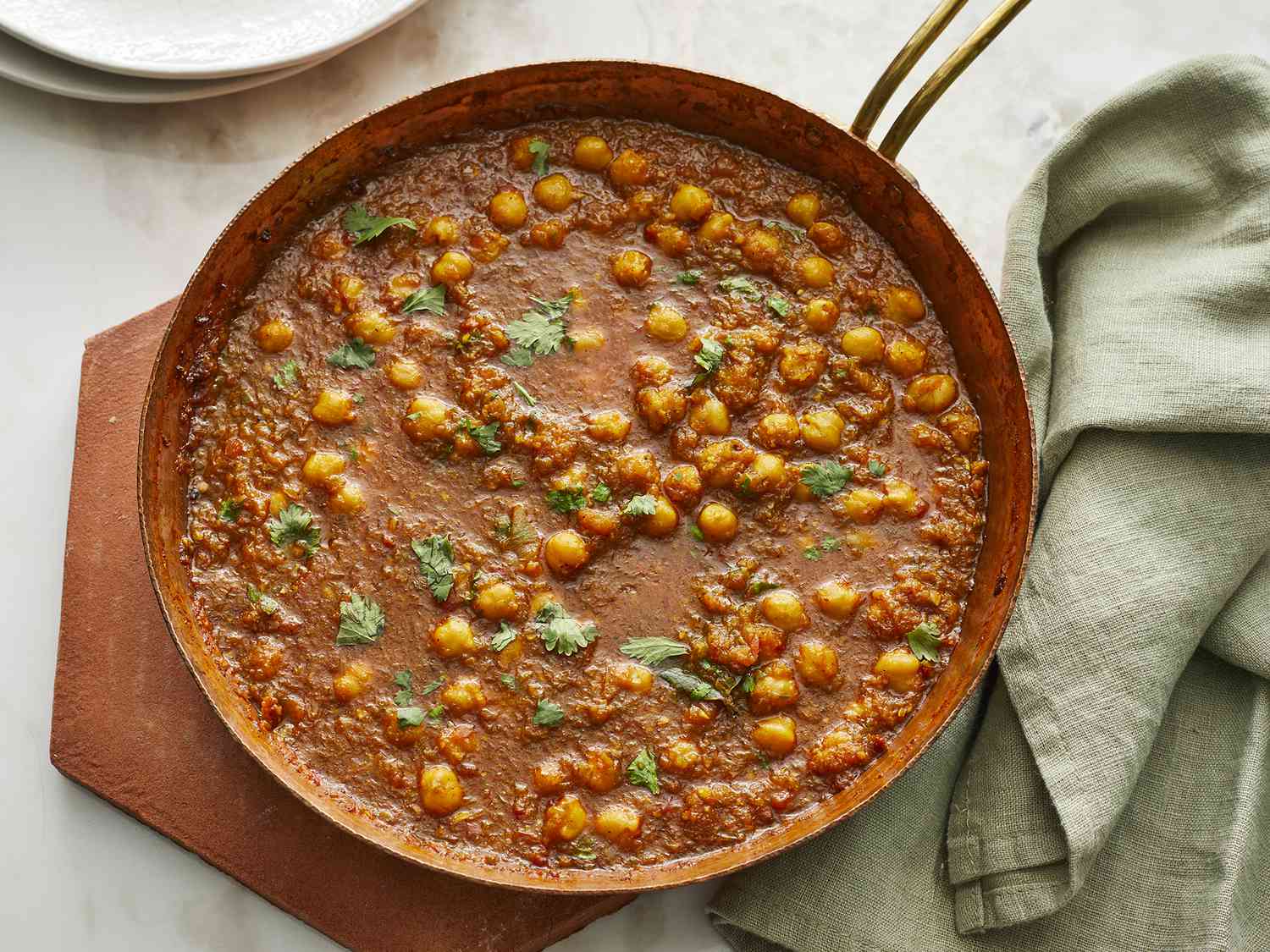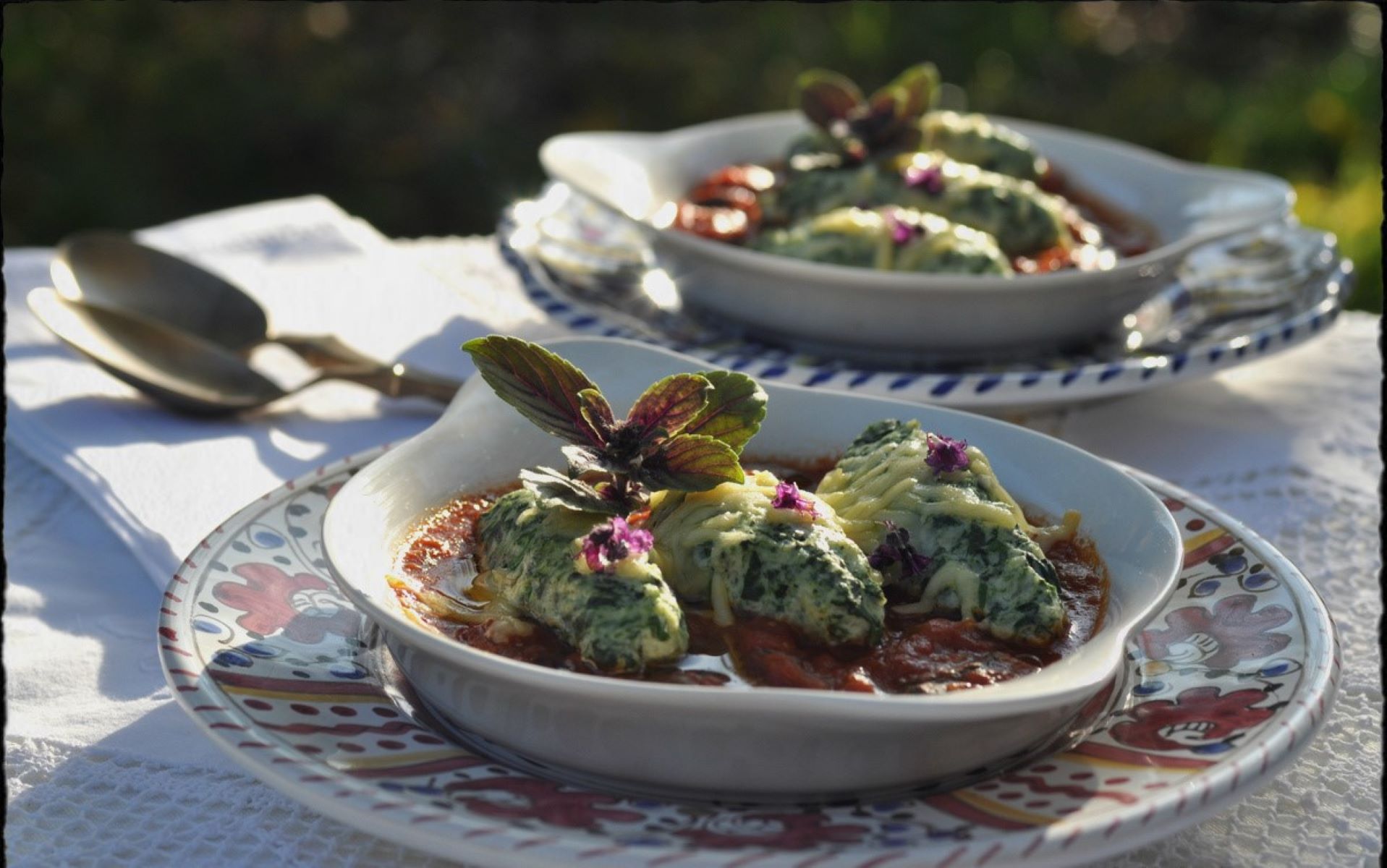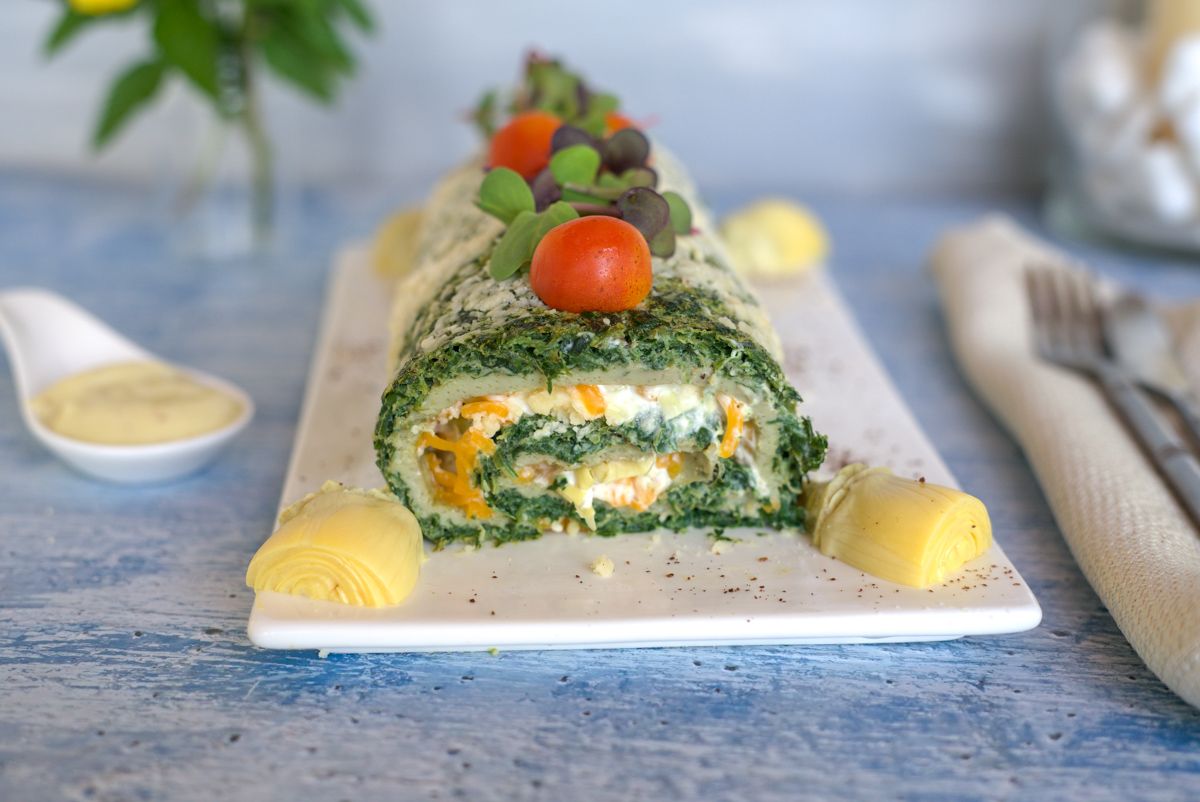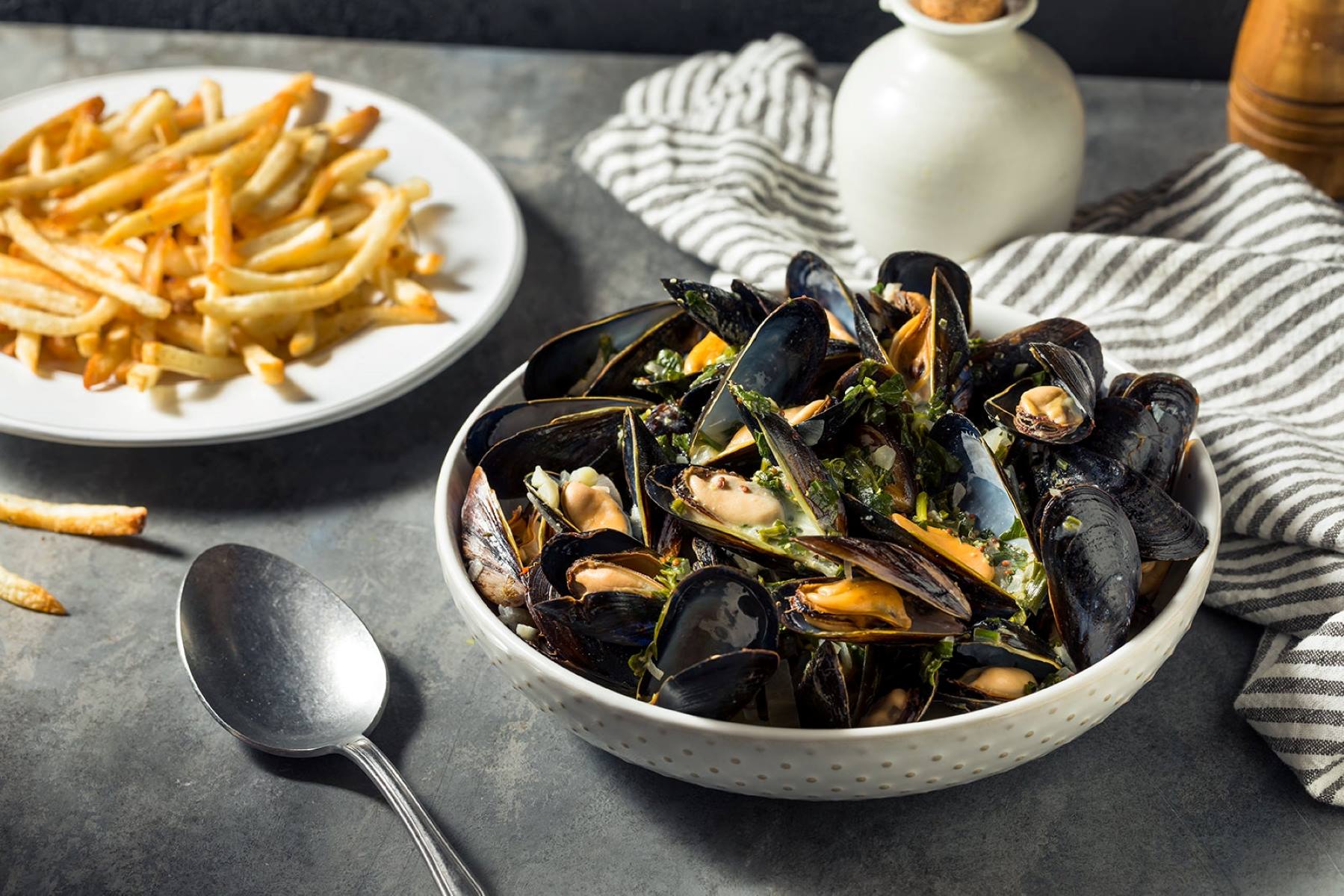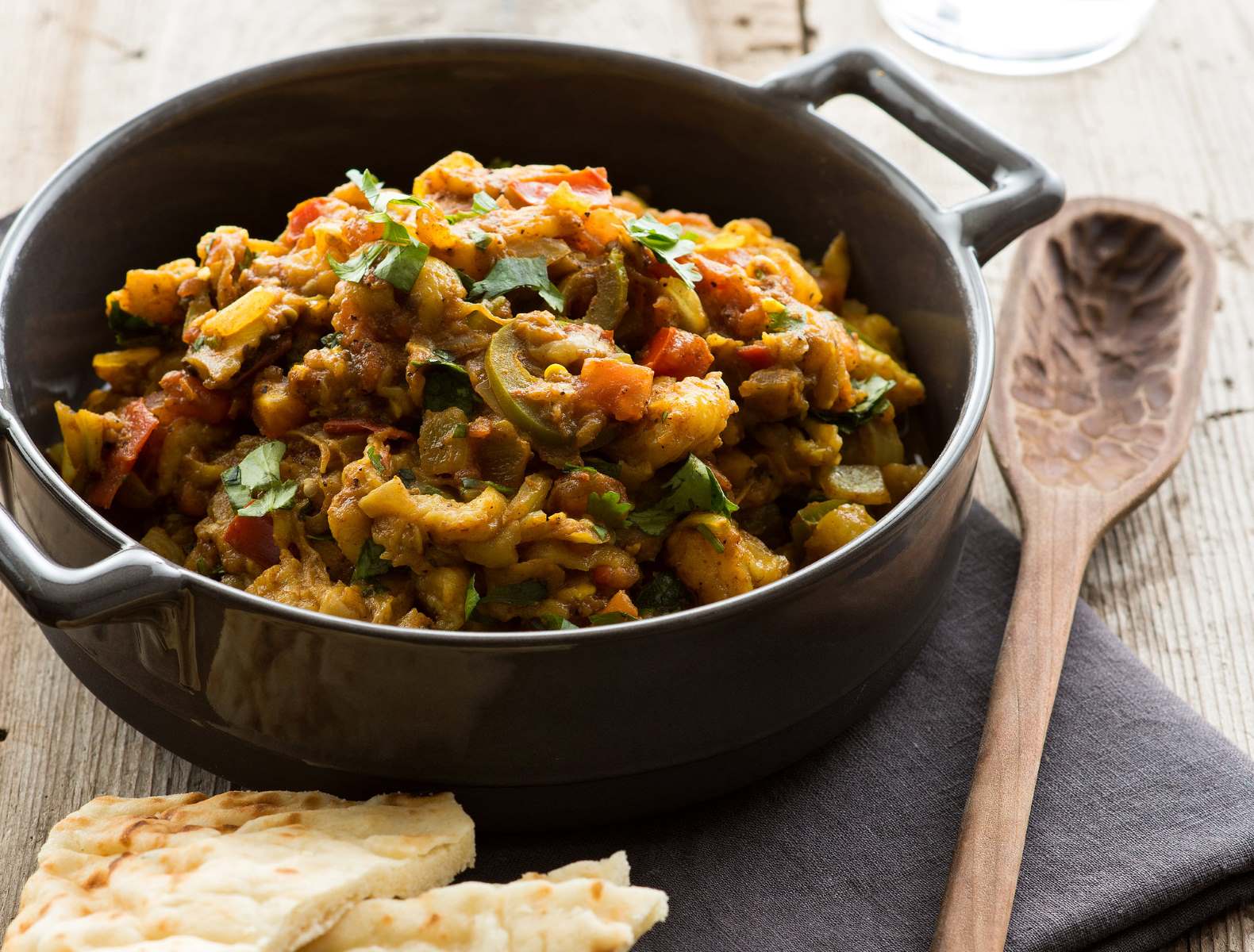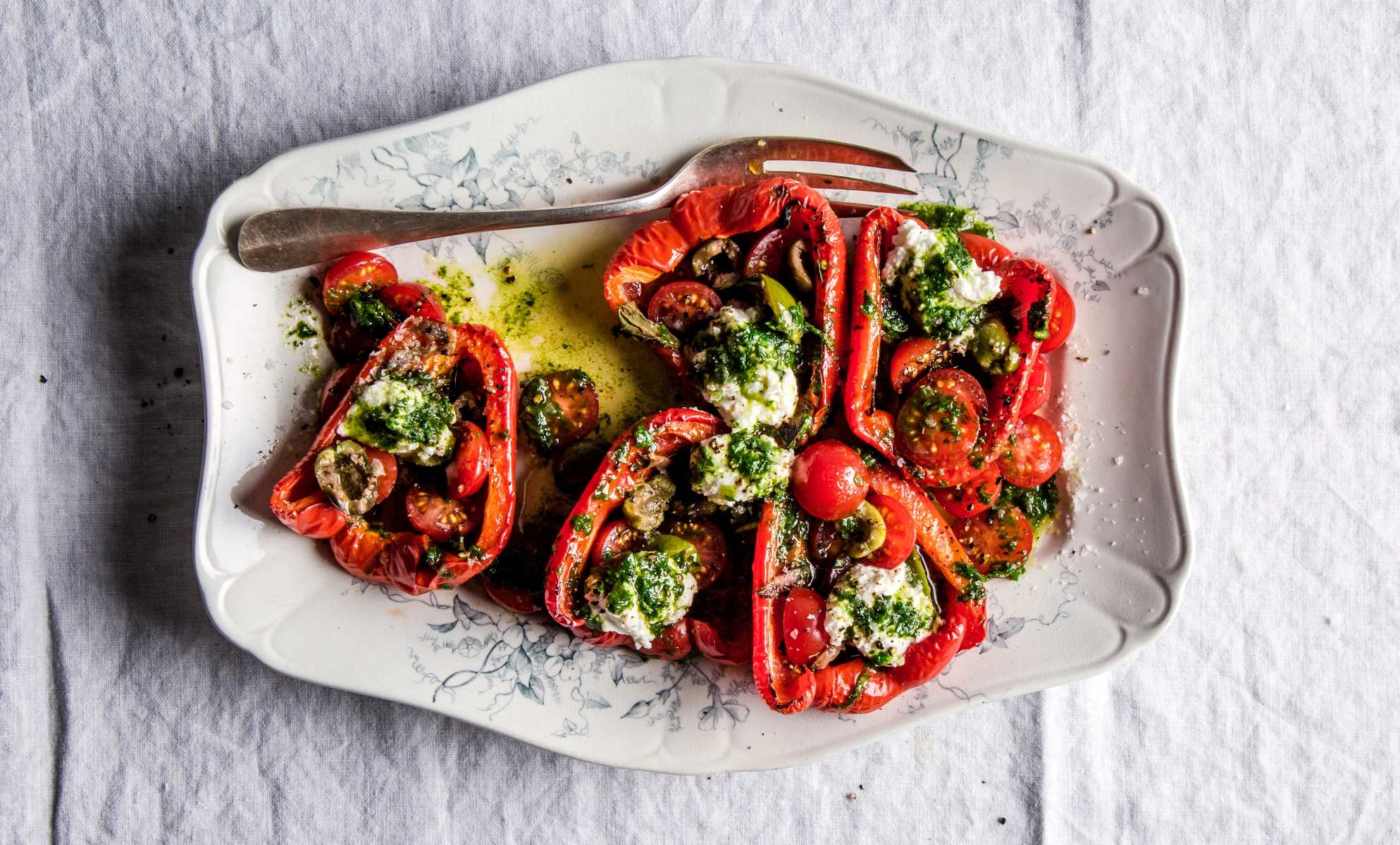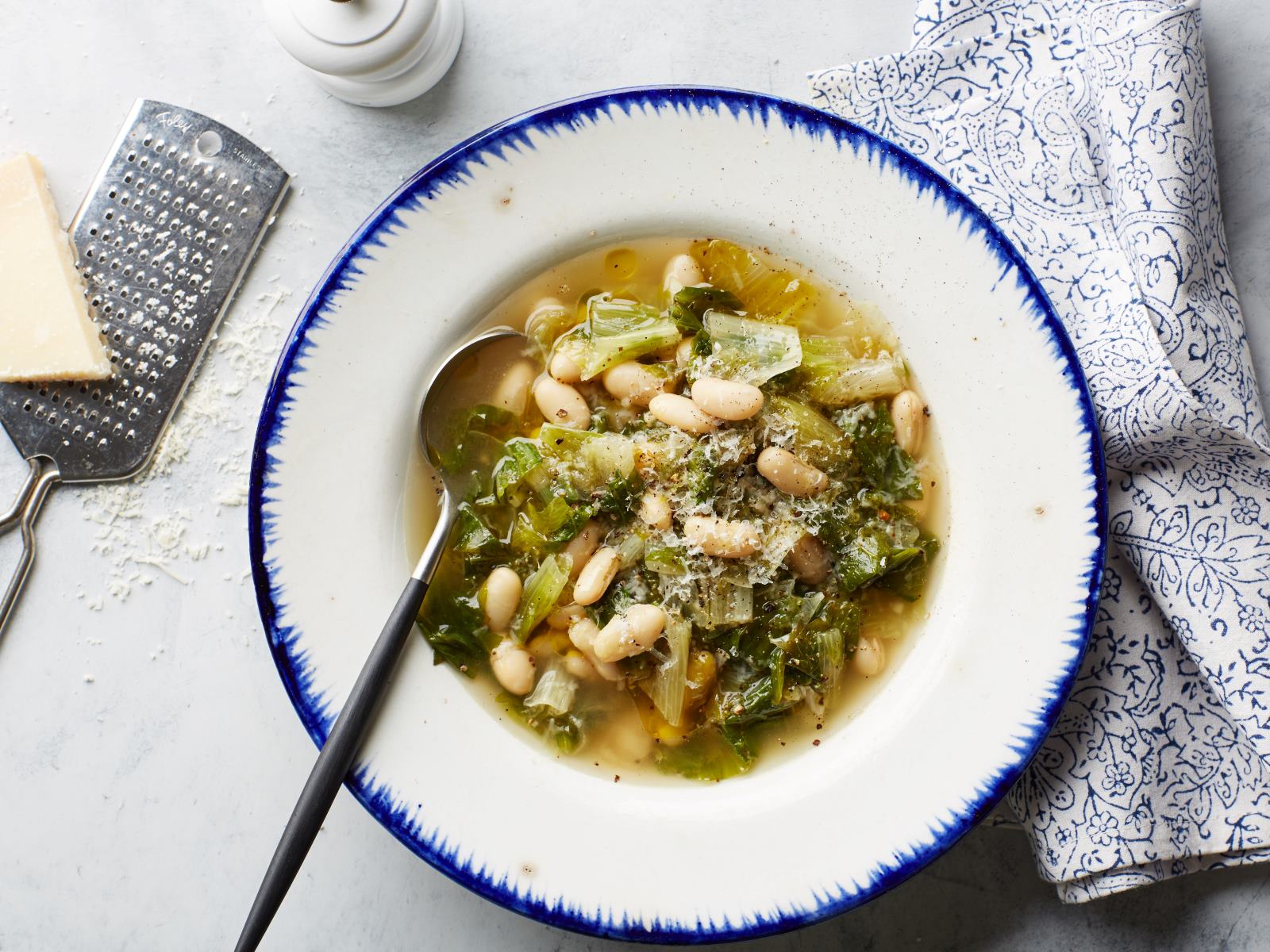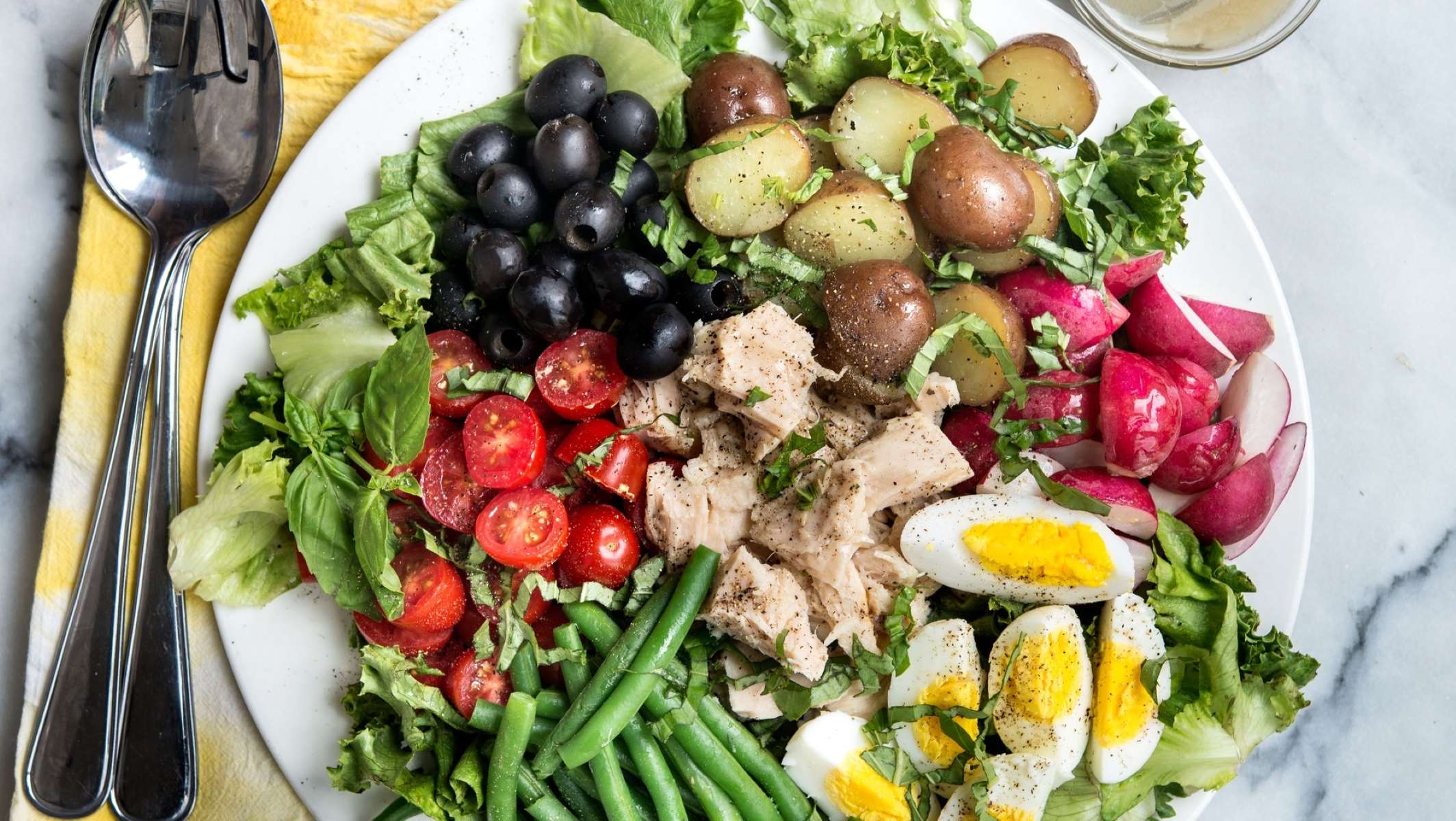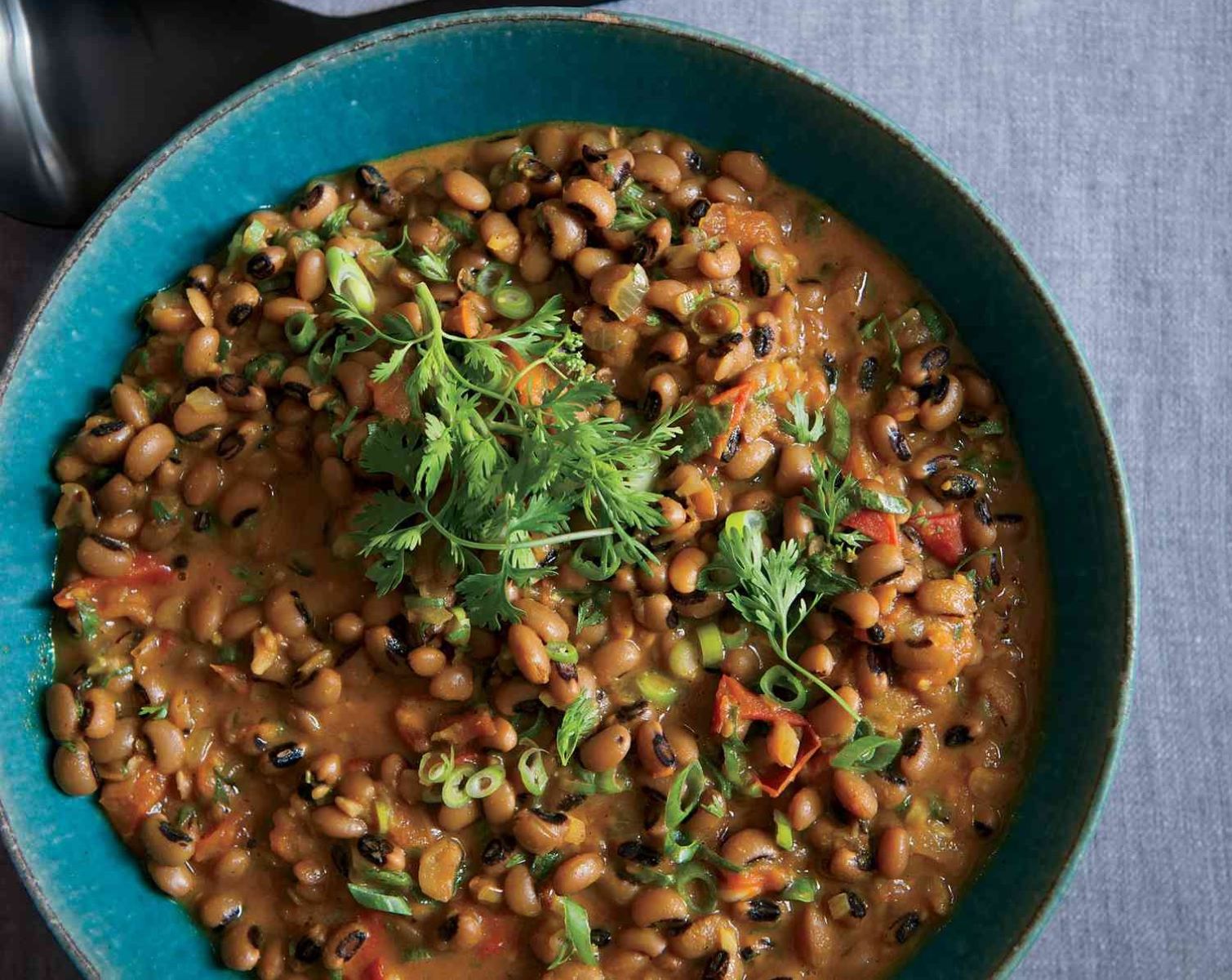Home>Eating>Delicious Indian Recipes: A Round-Up Of The Best Dishes From India
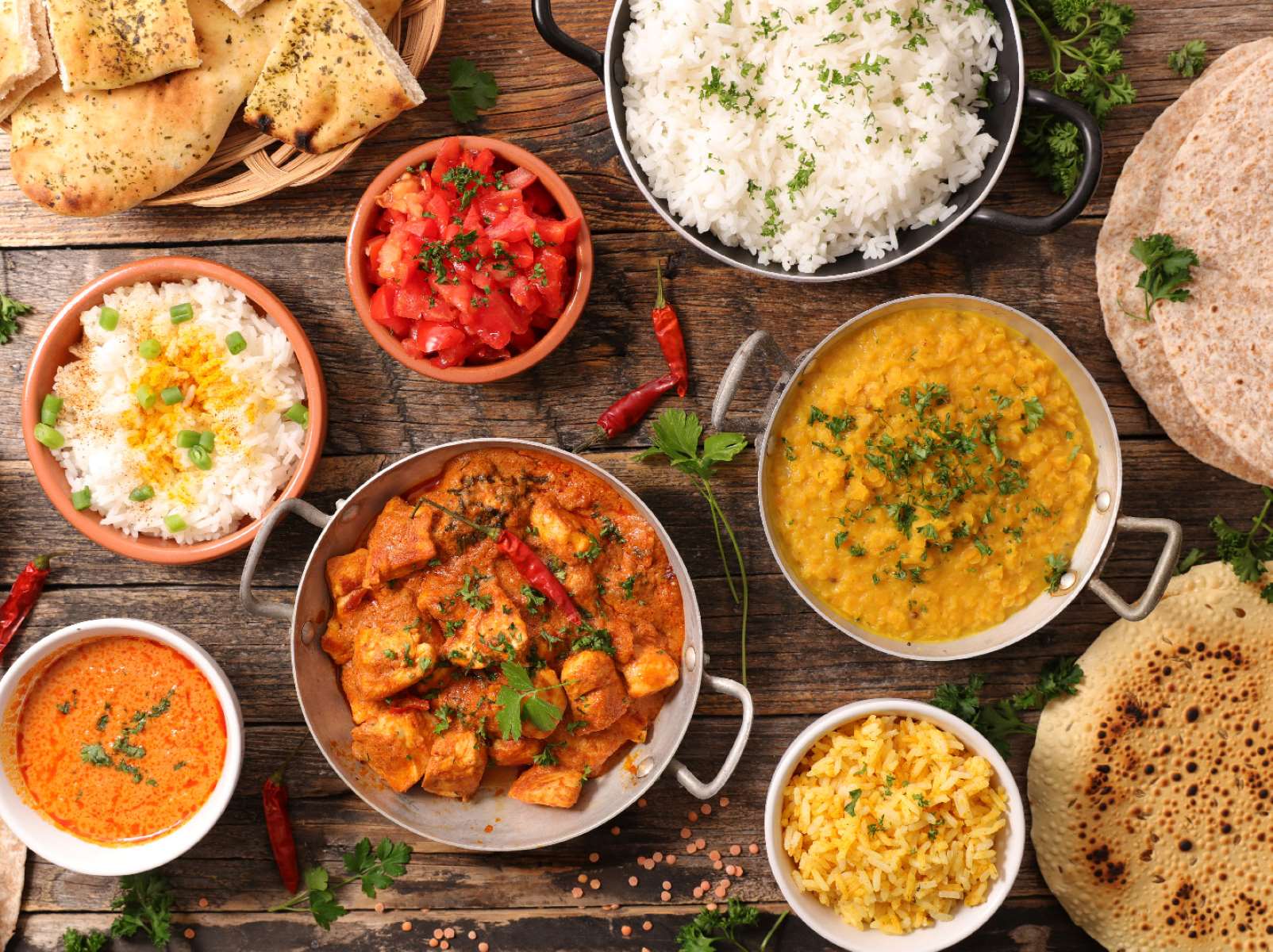

Eating
Delicious Indian Recipes: A Round-Up Of The Best Dishes From India
Published: February 15, 2024
Explore a delectable array of Indian recipes that will tantalize your taste buds. From savory curries to aromatic spices, satisfy your cravings with these mouthwatering dishes. Discover the essence of Indian cuisine and elevate your eating experience.
(Many of the links in this article redirect to a specific reviewed product. Your purchase of these products through affiliate links helps to generate commission for Simplelivingeating.com, at no extra cost. Learn more)
Table of Contents
Introduction
Indian cuisine is renowned for its rich and diverse flavors, vibrant colors, and aromatic spices. The culinary traditions of India have captivated food enthusiasts worldwide, offering a delightful journey through a myriad of delectable dishes. From the creamy indulgence of butter chicken to the fragrant allure of biryani, each dish tells a story steeped in history and culture.
The art of Indian cooking is a harmonious blend of tradition, innovation, and regional diversity. It encompasses a wide array of vegetarian and non-vegetarian delicacies, each with its own distinct character and charm. Whether it's the fiery heat of a masala dosa or the comforting warmth of a bowl of chole bhature, Indian cuisine never fails to tantalize the taste buds and evoke a sense of culinary adventure.
In this comprehensive guide, we embark on a flavorful journey through some of the most beloved and iconic Indian dishes. From the sizzling tandoori chicken to the indulgent sweetness of gulab jamun, each dish represents a culinary masterpiece that reflects the essence of Indian gastronomy. Join us as we explore the tantalizing world of Indian cuisine, where every bite is a celebration of flavor, tradition, and the art of cooking.
Butter Chicken
Butter chicken, also known as "murgh makhani," is a quintessential Indian dish that has captured the hearts and palates of food enthusiasts around the globe. This iconic delicacy originated in the bustling streets of Delhi, where it was crafted as a culinary masterpiece that embodies the rich and indulgent flavors of North Indian cuisine.
The preparation of butter chicken involves marinating tender pieces of chicken in a harmonious blend of yogurt, aromatic spices, and a hint of tangy lemon juice. The marinated chicken is then traditionally cooked in a tandoor, a clay oven that imparts a distinct smoky flavor to the dish. Once cooked to perfection, the succulent chicken is bathed in a luxuriously creamy tomato-based gravy, enriched with butter, cream, and a medley of spices.
The velvety texture of the butter chicken gravy is a testament to the artful balance of flavors, where the subtle sweetness of ripe tomatoes harmonizes with the warmth of ginger, garlic, and a delicate hint of fenugreek. This luscious sauce envelops the tender chicken, infusing it with layers of savory goodness that dance on the palate with every bite.
Served alongside fragrant basmati rice or a freshly baked naan, butter chicken is a culinary indulgence that promises a symphony of flavors and textures. The dish strikes a perfect equilibrium between the richness of the creamy gravy and the subtle heat of the spices, creating a sensory experience that is both comforting and exhilarating.
The allure of butter chicken lies not only in its sumptuous taste but also in the nostalgia and warmth it evokes. It has become a beloved symbol of Indian cuisine, representing the art of blending tradition with innovation to create a dish that transcends cultural boundaries and brings joy to all who savor it.
Whether enjoyed in a bustling Indian eatery or prepared lovingly at home, butter chicken continues to reign as a timeless classic, inviting food enthusiasts to revel in its opulent flavors and embrace the culinary heritage of India.
Biryani
Biryani, often hailed as the crown jewel of Indian cuisine, is a fragrant and indulgent rice dish that has captured the hearts and palates of food enthusiasts around the world. This iconic delicacy traces its origins to the royal kitchens of India, where it was crafted as a culinary masterpiece that embodies the opulence and grandeur of Mughlai cuisine.
The preparation of biryani is a meticulous art that involves layering fragrant, long-grain basmati rice with succulent pieces of marinated meat, aromatic spices, and a symphony of flavors. The meat, which can be tender lamb, succulent chicken, or even fragrant vegetables, is marinated in a blend of yogurt, ginger, garlic, and an array of spices, allowing it to absorb the rich and complex flavors before being layered with the rice.
The magic of biryani unfolds as it is slow-cooked in a sealed pot, allowing the aromas and essences of the ingredients to meld together, creating a tapestry of flavors that is at once vibrant and harmonious. The fragrant steam that escapes when the pot is opened reveals tender, perfectly cooked meat nestled amidst the glistening grains of rice, each infused with the heady aromas of saffron, rose water, and aromatic spices.
The allure of biryani lies not only in its sumptuous taste but also in the sensory journey it offers. With each spoonful, one encounters a delightful medley of textures and flavors, from the tender meat to the fragrant rice, punctuated by the occasional burst of sweetness from plump raisins or the crunch of caramelized onions.
Biryani is more than just a dish; it is a celebration of culinary artistry and a testament to the rich tapestry of Indian flavors. Whether enjoyed at a lavish banquet or savored in the comfort of one's home, biryani continues to reign as a timeless classic, inviting food enthusiasts to revel in its opulent flavors and embrace the culinary heritage of India.
Chole Bhature
Chole Bhature is a beloved North Indian dish that embodies the vibrant and robust flavors of the region's culinary heritage. This iconic duo consists of chole, a spicy and tangy chickpea curry, and bhature, a fluffy and deep-fried bread that serves as the perfect accompaniment. The dish is a celebration of contrasts, where the bold and zesty flavors of the chole harmonize with the indulgent and airy texture of the bhature.
The preparation of chole involves simmering tender chickpeas in a fragrant and tangy tomato-based gravy, enriched with a medley of aromatic spices such as cumin, coriander, and garam masala. The result is a hearty and flavorful curry that tantalizes the taste buds with its rich and complex profile. The chole is often garnished with a sprinkle of fresh cilantro and a squeeze of zesty lemon juice, adding a burst of freshness to the dish.
On the other hand, bhature, the perfect counterpart to the robust chole, is a leavened bread made from refined flour, yogurt, and a hint of baking powder. The dough is allowed to ferment, resulting in a soft and airy texture that puffs up beautifully when deep-fried. The golden-brown, pillowy bhature provides a delightful contrast to the bold flavors of the chole, offering a perfect vessel for sopping up the luscious curry.
The combination of chole and bhature is a culinary symphony that delights the senses and evokes a sense of comfort and indulgence. Whether enjoyed as a hearty breakfast, a leisurely brunch, or a satisfying dinner, chole bhature has secured its place as a beloved classic in North Indian cuisine. Its ability to bring together contrasting elements of flavor, texture, and aroma makes it a timeless favorite that continues to captivate food enthusiasts around the world.
From the bustling streets of Delhi to the kitchens of Indian households, chole bhature remains a cherished dish that embodies the spirit of culinary creativity and the art of savoring the rich and diverse flavors of India.
Tandoori Chicken
Tandoori chicken, with its vibrant red hue and tantalizing aroma, stands as a quintessential emblem of Indian culinary excellence. This iconic dish, originating in the rustic kitchens of the Punjab region, has transcended borders to become a global sensation, celebrated for its bold flavors and succulent texture.
The preparation of tandoori chicken begins with marinating tender cuts of chicken in a harmonious blend of yogurt, aromatic spices, and a hint of tangy lemon juice. The marinade, often infused with a vibrant mix of cayenne pepper, paprika, turmeric, and garam masala, imparts the signature red hue and a symphony of flavors that define this classic dish. The use of yogurt not only tenderizes the chicken but also infuses it with a subtle tanginess that complements the robust spices.
Traditionally, tandoori chicken is cooked in a tandoor, a cylindrical clay oven that reaches scorching temperatures, resulting in the characteristic charred and smoky exterior that encases the tender, juicy meat. The intense heat of the tandoor sears the marinade, locking in the succulence of the chicken while infusing it with a tantalizing smokiness that elevates its flavor profile.
The allure of tandoori chicken lies in its ability to captivate the senses with a harmonious blend of spice, smoke, and succulence. Each bite offers a symphony of flavors, from the smoky char of the exterior to the tender juiciness within, punctuated by the warm embrace of aromatic spices. Served with a squeeze of zesty lemon and a sprinkling of chaat masala, tandoori chicken embodies the essence of Indian gastronomy, offering a sensory experience that is at once vibrant and comforting.
Whether enjoyed as a tantalizing appetizer, a centerpiece of a festive feast, or a satisfying street food indulgence, tandoori chicken continues to reign as a timeless classic that embodies the rich tapestry of Indian flavors. Its ability to evoke a sense of culinary adventure and celebration makes it a beloved dish that transcends cultural boundaries and invites food enthusiasts to savor the vibrant and aromatic essence of Indian cuisine.
Palak Paneer
Palak Paneer, a beloved vegetarian dish hailing from the heartlands of North India, embodies the essence of comfort and nourishment. This iconic delicacy seamlessly combines the vibrant flavors of spinach (palak) with the creamy richness of paneer, resulting in a dish that is as wholesome as it is indulgent.
The preparation of Palak Paneer begins with blanching fresh spinach leaves, which are then pureed to form a vibrant green base that serves as the foundation of the dish. The pureed spinach is gently simmered with a medley of aromatic spices, including cumin, coriander, and garam masala, infusing the dish with a fragrant and earthy essence that is characteristic of North Indian cuisine.
The star of the dish, paneer, a fresh Indian cheese with a delicate and creamy texture, is cubed and gently folded into the velvety spinach gravy. The paneer absorbs the vibrant flavors of the spinach, creating a harmonious union of textures and tastes that is both comforting and satisfying. The result is a luscious and creamy dish that offers a delightful contrast of flavors, with the subtle sweetness of the paneer complementing the earthy richness of the spinach.
Palak Paneer is more than just a dish; it is a celebration of the bountiful flavors and nourishing ingredients that define Indian vegetarian cuisine. Whether enjoyed with a warm serving of naan or a mound of fragrant basmati rice, Palak Paneer continues to captivate food enthusiasts with its wholesome and comforting appeal.
From the bustling kitchens of Indian households to the vibrant street food stalls, Palak Paneer remains a cherished classic that embodies the art of savoring the rich and diverse flavors of India. Its ability to evoke a sense of culinary comfort and nourishment makes it a timeless favorite that continues to delight palates and warm hearts around the world.
Masala Dosa
Masala Dosa, a beloved South Indian specialty, is a culinary marvel that has garnered a devoted following both within India and across the globe. This iconic dish, with its golden, crispy exterior and flavorful, savory filling, represents the epitome of South Indian gastronomy.
The preparation of Masala Dosa begins with a batter made from a combination of rice and urad dal (black gram), which is allowed to ferment, resulting in a light and airy texture that lends the dosa its characteristic crispness. The batter is ladled onto a hot griddle and skillfully spread into a thin, circular shape, creating a delicate lace-like pattern that crisps up to perfection.
The star of the show, the masala, is a fragrant and savory potato filling that complements the dosa's crisp exterior. The masala is crafted by sautéing a medley of onions, mustard seeds, curry leaves, and aromatic spices, which are then folded into a velvety mash of boiled potatoes. The result is a tantalizing mixture that exudes a symphony of flavors, from the warmth of the spices to the subtle sweetness of the onions.
The marriage of the crispy dosa and the flavorful masala creates a sensory experience that is both indulgent and comforting. Each bite offers a delightful contrast of textures and tastes, with the crispness of the dosa giving way to the creamy richness of the masala, punctuated by the aromatic notes of the spices.
Masala Dosa is often accompanied by an array of condiments, including coconut chutney and sambar, a fragrant and tangy lentil soup. The interplay of flavors and textures between the dosa, masala, and condiments creates a culinary symphony that delights the senses and evokes a sense of warmth and satisfaction.
From the bustling streets of Chennai to the kitchens of South Indian households, Masala Dosa remains a cherished classic that embodies the art of savoring the rich and diverse flavors of India. Its ability to evoke a sense of culinary adventure and comfort makes it a timeless favorite that continues to captivate food enthusiasts and beckon them to savor the vibrant and aromatic essence of South Indian cuisine.
Rogan Josh
Rogan Josh, a jewel of Kashmiri cuisine, stands as a testament to the rich culinary heritage of the region. This iconic dish, with its roots in the majestic valleys of Kashmir, embodies a symphony of robust flavors and aromatic spices that have captivated food enthusiasts for centuries.
The preparation of Rogan Josh begins with tender cuts of meat, traditionally lamb, marinated in a blend of yogurt, ginger, garlic, and a melange of spices such as fennel, cardamom, and cinnamon. The marinated meat is then slow-cooked to perfection, allowing the flavors to meld and infuse the tender meat with a depth of richness and complexity.
The defining characteristic of Rogan Josh lies in its vibrant red hue, which is derived from the use of Kashmiri dry red chilies, imparting a rich color and a subtle heat that elevates the dish to a sensory delight. The name "Rogan Josh" itself is derived from the Persian words "rogan," meaning oil, and "josh," meaning heat or passion, alluding to the dish's vibrant color and robust flavors.
The velvety gravy of Rogan Josh is a harmonious blend of caramelized shallots, tomatoes, and a medley of aromatic spices, resulting in a luscious sauce that envelops the tender meat, infusing it with layers of savory goodness. The slow cooking process allows the meat to tenderize and absorb the rich flavors of the gravy, creating a dish that is as comforting as it is indulgent.
Served alongside fragrant basmati rice or warm, pillowy naan, Rogan Josh offers a sensory experience that is at once vibrant and comforting. Each bite reveals a symphony of flavors, from the warmth of the spices to the succulence of the tender meat, punctuated by the subtle heat of the Kashmiri chilies.
From the regal banquets of Kashmiri royalty to the kitchens of food enthusiasts around the world, Rogan Josh remains a timeless classic that embodies the art of savoring the rich and diverse flavors of Indian cuisine. Its ability to evoke a sense of culinary adventure and celebration makes it a beloved dish that transcends cultural boundaries, inviting food enthusiasts to savor the vibrant and aromatic essence of Kashmiri gastronomy.
Aloo Gobi
Aloo Gobi, a beloved vegetarian dish deeply rooted in the culinary tapestry of North India, is a testament to the art of simplicity and the vibrant flavors of the region. This iconic dish, with its humble yet wholesome combination of potatoes (aloo) and cauliflower (gobi), embodies the essence of comfort and nourishment.
The preparation of Aloo Gobi begins with the careful sautéing of aromatic spices such as cumin, turmeric, and garam masala in fragrant ghee or oil, infusing the kitchen with a warm and inviting aroma. The addition of finely chopped onions, ginger, and garlic lends a depth of flavor to the dish, creating a fragrant base that forms the canvas for the starring ingredients.
The potatoes and cauliflower, cut into bite-sized pieces, are then gently folded into the fragrant spice mixture, allowing them to absorb the rich flavors and aromas. The vegetables are cooked to tender perfection, ensuring that each bite offers a delightful medley of textures and tastes, from the creamy softness of the potatoes to the delicate crunch of the cauliflower.
The magic of Aloo Gobi lies in its ability to transform humble ingredients into a dish that is as comforting as it is flavorful. The subtle sweetness of the potatoes complements the earthy richness of the cauliflower, creating a harmonious union of flavors that is both satisfying and nourishing. The dish is often garnished with a sprinkle of fresh cilantro and a squeeze of zesty lemon juice, adding a burst of freshness to the medley of flavors.
Whether enjoyed with a warm serving of roti or a mound of fragrant basmati rice, Aloo Gobi continues to captivate food enthusiasts with its wholesome and comforting appeal. From the bustling kitchens of Indian households to the vibrant street food stalls, Aloo Gobi remains a cherished classic that embodies the art of savoring the rich and diverse flavors of India. Its ability to evoke a sense of culinary comfort and nourishment makes it a timeless favorite that continues to delight palates and warm hearts around the world.
Samosa
Samosa, a beloved and iconic snack that has woven itself into the culinary fabric of India, is a culinary delight that embodies the perfect marriage of crisp, flaky pastry and a savory, spiced filling. This triangular-shaped pastry, with its origins rooted in the culinary traditions of the Middle East, has evolved to become a quintessential part of Indian street food culture, captivating the palates of food enthusiasts across the globe.
The preparation of samosa begins with the crafting of a delicate and crispy pastry, traditionally made from a blend of refined flour, ghee, and a pinch of salt. The dough is kneaded to perfection, resulting in a supple and elastic texture that yields the characteristic flakiness when fried to golden perfection. The art of shaping the samosa, with its distinctive triangular form, requires skill and precision, creating a vessel that encases the flavorful filling.
The filling, a fragrant and spiced medley of potatoes, peas, and aromatic spices such as cumin, coriander, and garam masala, is a testament to the rich and diverse flavors of Indian cuisine. The potatoes are boiled to tender perfection and then sautéed with the aromatic spices, allowing them to absorb the rich flavors and aromas. The addition of peas lends a burst of sweetness and texture to the filling, creating a delightful contrast of flavors.
Once the pastry and filling are prepared, the samosas are carefully assembled, with a generous portion of the savory filling encased within the delicate pastry. The samosas are then deep-fried to golden perfection, resulting in a crisp and flaky exterior that gives way to the fragrant and flavorful filling with every bite.
Samosa is often served alongside a medley of condiments, including tangy tamarind chutney and spicy green chutney, adding layers of flavor and complexity to this beloved snack. Whether enjoyed as a quick street food indulgence or as a delightful addition to festive gatherings, samosa continues to reign as a timeless classic that embodies the art of savoring the rich and diverse flavors of India.
From the bustling streets of Mumbai to the kitchens of Indian households, samosa remains a cherished snack that evokes a sense of culinary adventure and celebration. Its ability to captivate the senses with its crisp, flaky exterior and fragrant, spiced filling makes it a beloved dish that transcends cultural boundaries, inviting food enthusiasts to savor the vibrant and aromatic essence of Indian street food culture.
Gulab Jamun
Gulab Jamun, with its alluring aroma and indulgent sweetness, stands as a timeless symbol of Indian dessert craftsmanship. This iconic confection, revered for its melt-in-the-mouth texture and luscious syrupy embrace, has captured the hearts and palates of food enthusiasts around the world.
The art of crafting Gulab Jamun begins with the meticulous preparation of a dough made from khoya (reduced milk), enriched with a hint of flour and a touch of cardamom for a fragrant allure. The dough is carefully kneaded to achieve a smooth and pliable consistency, ensuring that each delicate sphere of Gulab Jamun embodies a perfect balance of richness and tenderness.
Once the dough is shaped into small, uniform balls, they are gently fried to a golden hue, allowing them to develop a sumptuous caramelized exterior while retaining a soft and velvety interior. The fried Gulab Jamun is then lovingly immersed in a fragrant sugar syrup infused with rose water, cardamom, and a hint of saffron, allowing the confection to soak up the syrup's ambrosial essence.
The result is a sensory delight that transcends the ordinary, offering a symphony of flavors and textures with every luscious bite. The Gulab Jamun, delicately perfumed with the floral notes of rose water and the warm embrace of cardamom, melts effortlessly on the tongue, releasing a cascade of sweetness that is at once comforting and exhilarating.
Whether enjoyed as a decadent finale to a festive feast or as a delightful indulgence during celebratory occasions, Gulab Jamun continues to reign as a beloved classic that embodies the art of savoring the rich and diverse flavors of Indian desserts. Its ability to evoke a sense of culinary delight and celebration makes it a timeless favorite that beckons food enthusiasts to savor the opulent and aromatic essence of Indian sweet confections.
Conclusion
In conclusion, the rich and diverse tapestry of Indian cuisine offers a tantalizing journey through a myriad of iconic dishes that embody the essence of culinary artistry, tradition, and innovation. From the creamy indulgence of butter chicken to the fragrant allure of biryani, each dish tells a story steeped in history and culture, inviting food enthusiasts to savor the vibrant and aromatic essence of Indian gastronomy.
The culinary landscape of India is a harmonious blend of regional diversity, vibrant flavors, and time-honored traditions, each dish representing a culinary masterpiece that reflects the rich tapestry of Indian flavors. Whether it's the fiery heat of a masala dosa or the comforting warmth of a bowl of chole bhature, Indian cuisine never fails to tantalize the taste buds and evoke a sense of culinary adventure.
As we explored the iconic dishes such as tandoori chicken, palak paneer, rogan josh, aloo gobi, samosa, and gulab jamun, it became evident that each dish encapsulates the spirit of Indian culinary creativity and the art of savoring rich and diverse flavors. These dishes have transcended borders, captivating the palates of food enthusiasts around the world and inviting them to revel in the opulent flavors and embrace the culinary heritage of India.
Whether enjoyed in the bustling streets of India or prepared lovingly at home, these dishes continue to reign as timeless classics, inviting food enthusiasts to savor the vibrant and aromatic essence of Indian cuisine. The allure of Indian cuisine lies not only in its sumptuous taste but also in the nostalgia and warmth it evokes, representing the art of blending tradition with innovation to create dishes that transcend cultural boundaries and bring joy to all who savor them.
In essence, the journey through the tantalizing world of Indian cuisine is a celebration of flavor, tradition, and the art of cooking, inviting food enthusiasts to embark on a sensory adventure that is as comforting as it is exhilarating. Each dish represents a culinary masterpiece that embodies the rich and diverse flavors of India, inviting food enthusiasts to savor the vibrant and aromatic essence of Indian gastronomy.

